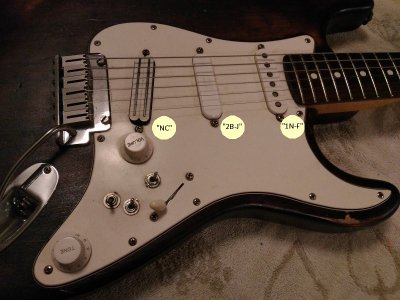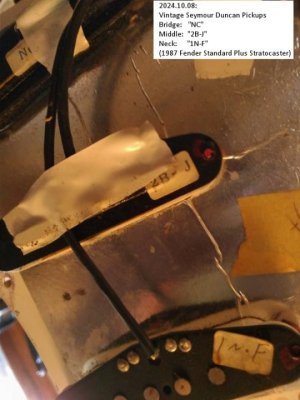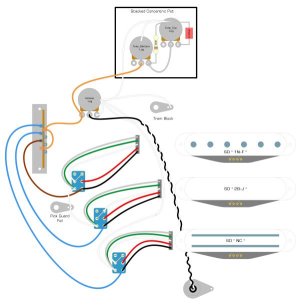A thread seeking assistance to identify the vintage (L-80/e-90) 4-wire pickups that are part of a back-in-the-day Super Strat modification to what started life as an '87 Fender American Standard Plus Strat.
Labels on the bottoms of the pickups read as follows:
I have already come across product information suggesting that the middle pu is likely a "Hot Stack w/ Solid White Cover".
The bridge appears to be an early version of the "Hot Rails" humbucker.
Comments and questions are welcome, as are any referrals to archives of product literature/price lists.
I am also interested in finding out the model names & product codes for current models of the vintage pickups in my instrument.
Labels on the bottoms of the pickups read as follows:
Bridge: "NC"
Middle: "2B-J"
Neck: . "1N-F"
Middle: "2B-J"
Neck: . "1N-F"
I have already come across product information suggesting that the middle pu is likely a "Hot Stack w/ Solid White Cover".
The bridge appears to be an early version of the "Hot Rails" humbucker.
Comments and questions are welcome, as are any referrals to archives of product literature/price lists.
I am also interested in finding out the model names & product codes for current models of the vintage pickups in my instrument.
Attachments
Last edited:



